Stories7.3.2023
Voyagers
Museum of Visual Arts
Lahden visuaalisten taiteiden museo
Malva, 3.3.– 3.9.2023
It invites to linger and become sensitized, even spiritualized. Designer Klaus Haapaniemi, known for his imaginative creations, has conjured up the mythological Voyagers gesamtkunstwerk, a complete work of art, for the Lahti Museum of Visual Arts Malva in Finland. It is a nomadic camp set up in the exhibition space: four architectural tents host mixed media sculptures and are surrounded by soundscapes, animated light totems and occasional performances by dancers. Visitors to the Voyagers camp are allowed to immerse themselves in the depth of their subconscious, get to know imaginary cultures and dive into their visual whirlwinds.
Exploring the Voyagers
1 | 4Exploring the Voyagers
2 | 4Exploring the Voyagers
3 | 4Exploring the Voyagers
4 | 4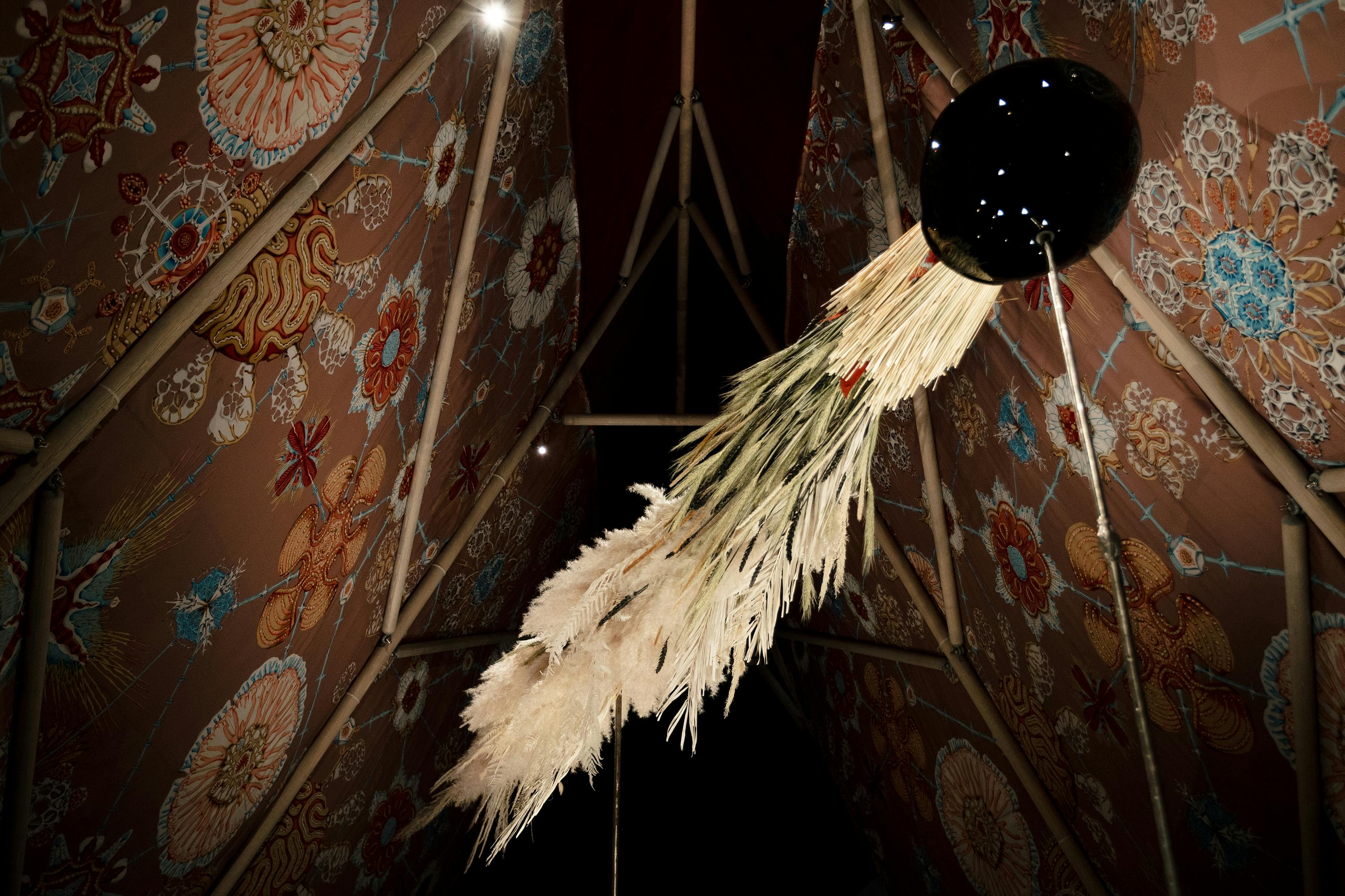
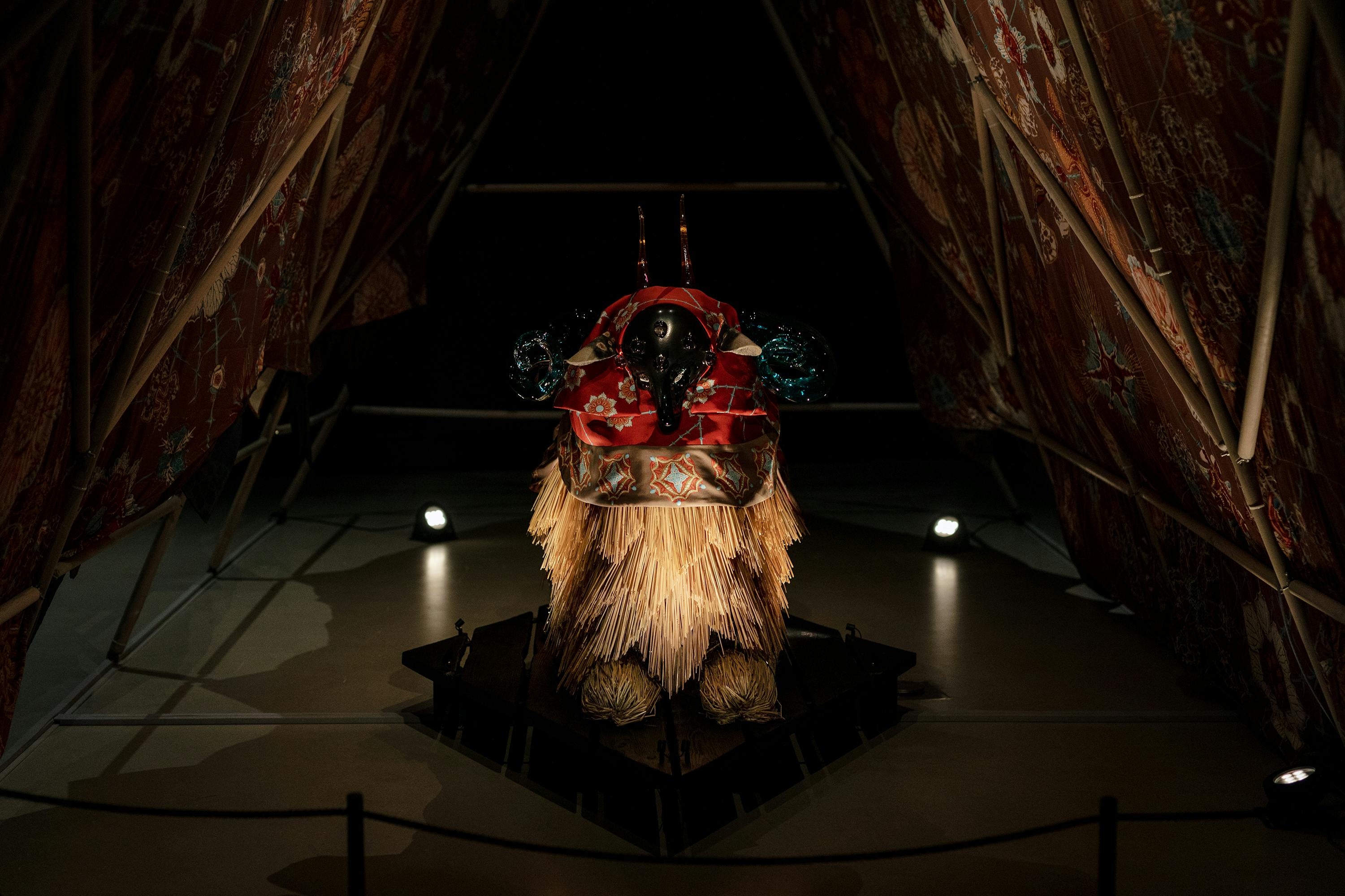
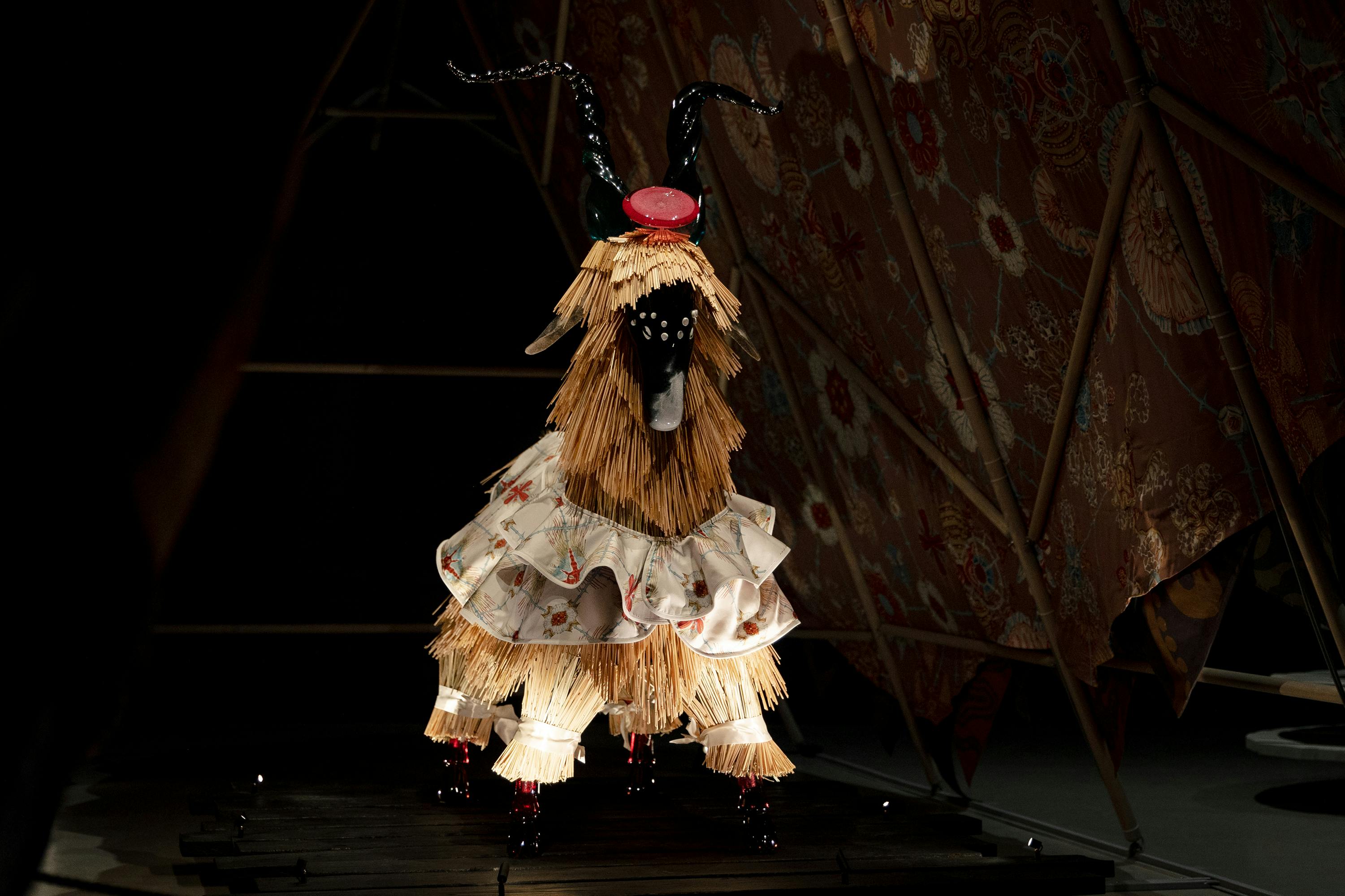
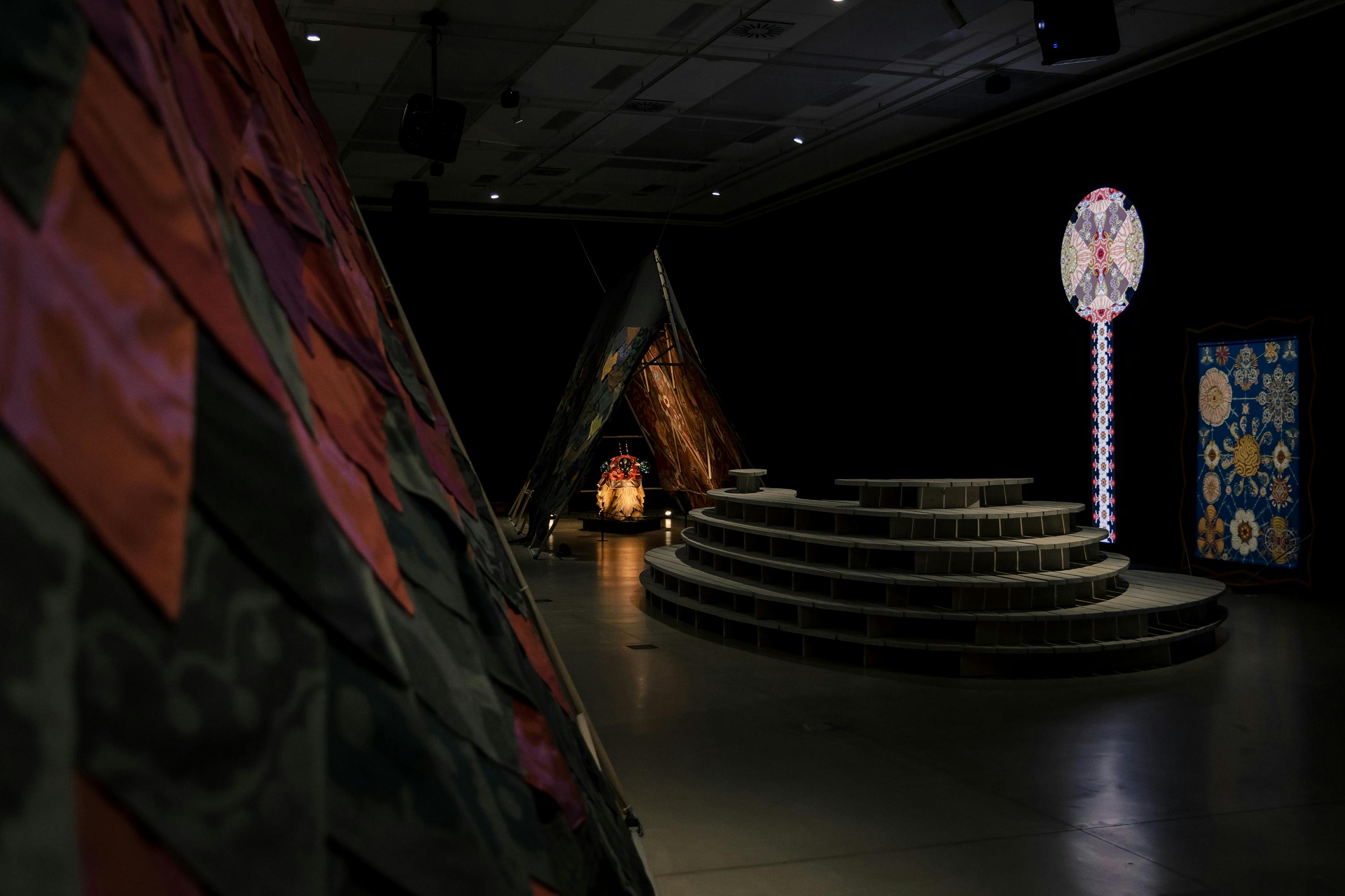








It is the interdisciplinary approach that makes Klaus Haapaniemi'sVoyagers unique. Natural science, psychoactive plants, modern esotericism and occultism have served as inspirations for the voyagers.
The exhibition does not open to the visitor linearly, but creates a meditative experience of overlapping, fleeting snapshots – a spontaneous synthesis of fantasy worlds and sounds.
The artist has recorded, among other things, the sounds of animals and the forest, as well as urban situations such as tinkle of pinball machine, tuning of police brass orchestra, excerpts from conversations and distant choir singing, as well as the rumble of traffic and rockets. We can also be lulled to the caress of the lute's tunes, for example, while lounging on a seating created especially for this.
"My goal is that visitors who enjoy medieval madrigals or Sandra's In the Heat of the Night could rejoice together, immersing themselves in the world of our work", Haapaniemi states and emphasises that the exhibition was made in collaboration between masters of several different crafts, such as carpenters, glassblowers and traditional Yule goat maker. The clothing design, artistic direction of the exhibition, the moving visuals, soundscape and music were also created as a team effort.
And how does the Voyagers look like? It is like a visual journey to the world of imagination. Hypnotic media art, slowly moving digital images are projected onto the walls of the museum. In these abstract light totems, you can sense a similar design language as in the leaded glass windows of medieval churches.
The "shingle roof" of the tents is linen, with hand-applied geometric details. The lining fabric is crepe, and it also consists of a multicolored print pattern. Inside, you can also find sculptures depicting animals, made of mouth-blown glass in Nuutajärvi, hand-made straw covering and silk fabric, on top of black charred lavers. There are a total of four mystical sculptures.
Woven in Belgium using the tapestry technique, the florals draw inspiration from herbal remedies, healing plants and flower motifs. The patterns of the textile works are unprecedented inHaapaniemi‘s works: in the fabrics produced for the exhibition, the metallic surface of the threads is combined with floral's own metallic color palette and geometric patterns. The wall hangings are attached to sculptural wooden frames, which were previewed at Klaus Haapaniemi's Berlin and Madrid exhibitions in 2022.
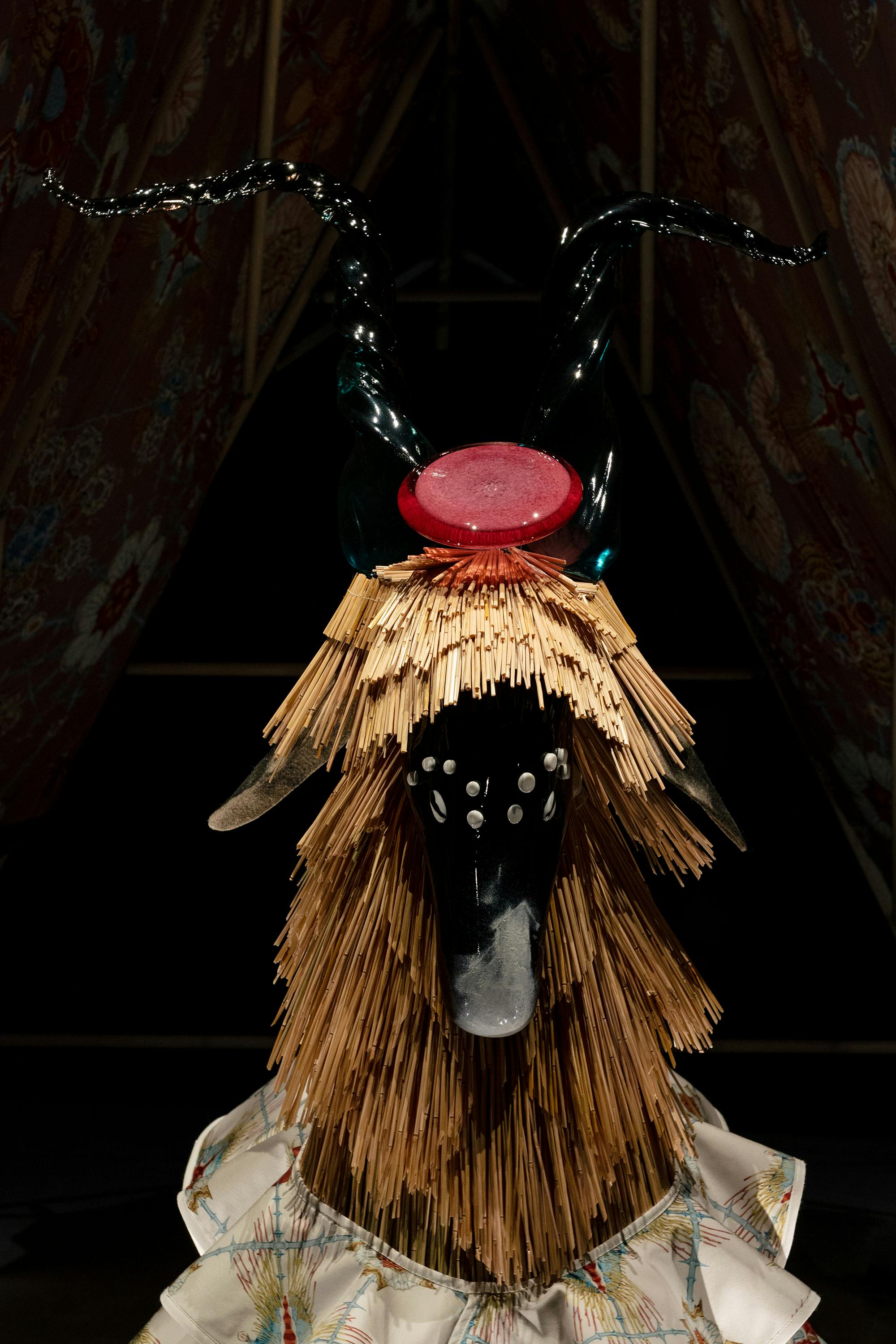


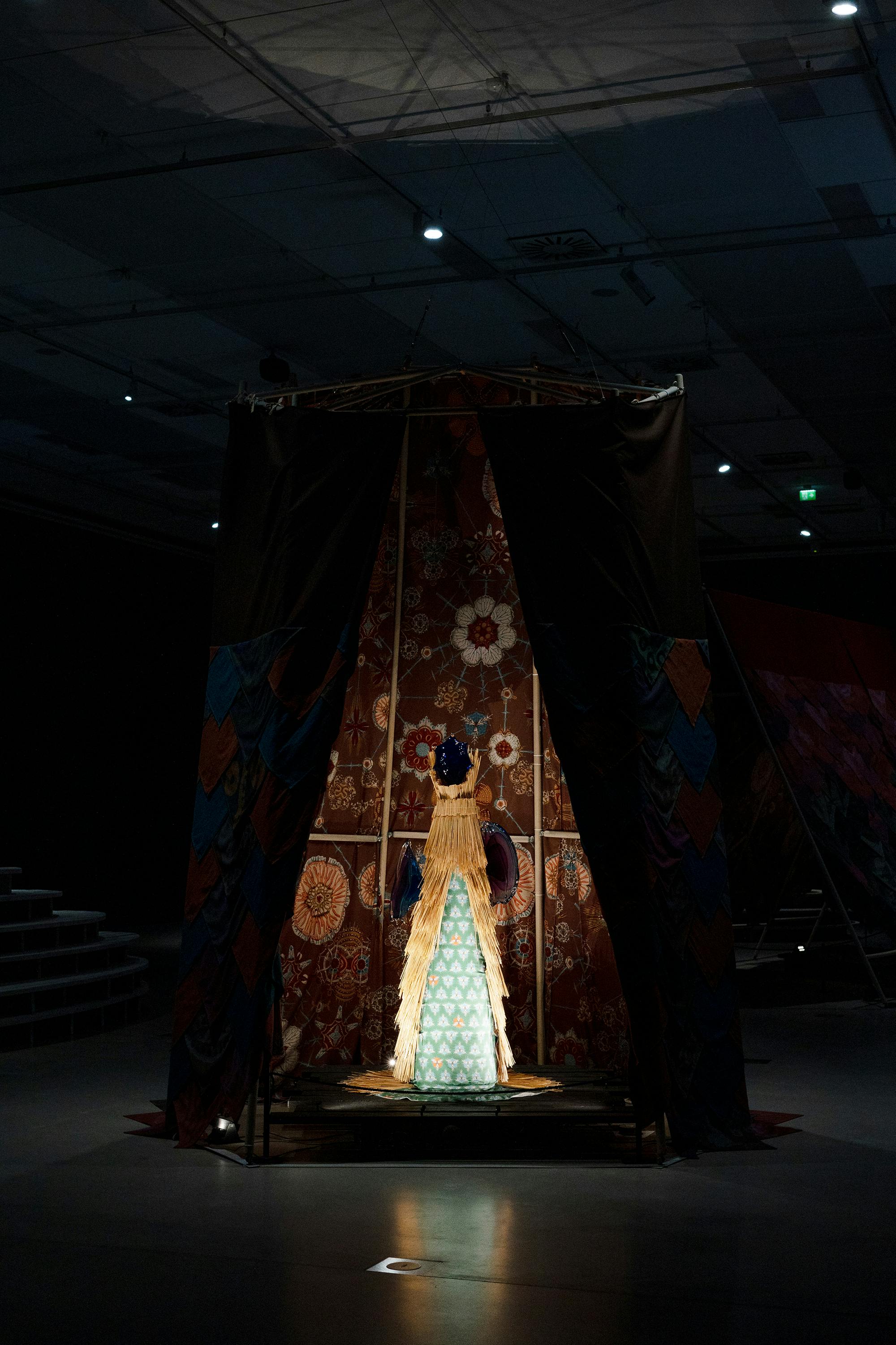
The idea of world citizenship is often associated with the wanderer myth. In the culture of nomads, the borders of nations are crossed and the cosmopolitan doesn't yearn for his homeland. Klaus Haapaniemi himself is a kind of world traveler: he has lived and worked with his partner, Mia Wallenius, the creative director of Klaus Haapaniemi & Co., in Italy, Great Britain and Germany as well - and at the same time created a spectacular career in Japan, among other places.
The concept of world citizenship was launched by Garry Davis, an activist who once renounced his American passport, and his supporters were soon joined by intellectuals such as Albert Einstein, André Breton and Carlo Levi. Global citizenship has generally evoked positive images - after all, it is closely linked to, for example, the peace movement. So it's no wonder that Theresa May's statement a few years ago caused an uproar in Haapaniemi's then home country of England. "If you believe you're a citizen of the world, you're a citizen of nowhere", she tapped.
"When the topic of nationality came to the surface in connection with Brexit, many reacted negatively to the Prime Minister's comment, because it was considered to stigmatize a certain group of people. I thought about it for a long time until I realized that I think it's a very positive thought. I don't need a national ideology to support my own self, and besides, nomads and wandering people have always fed my imagination. So the idea turned on its head, and I'm happy to be a citizen of nowhere", says Haapaniemi.
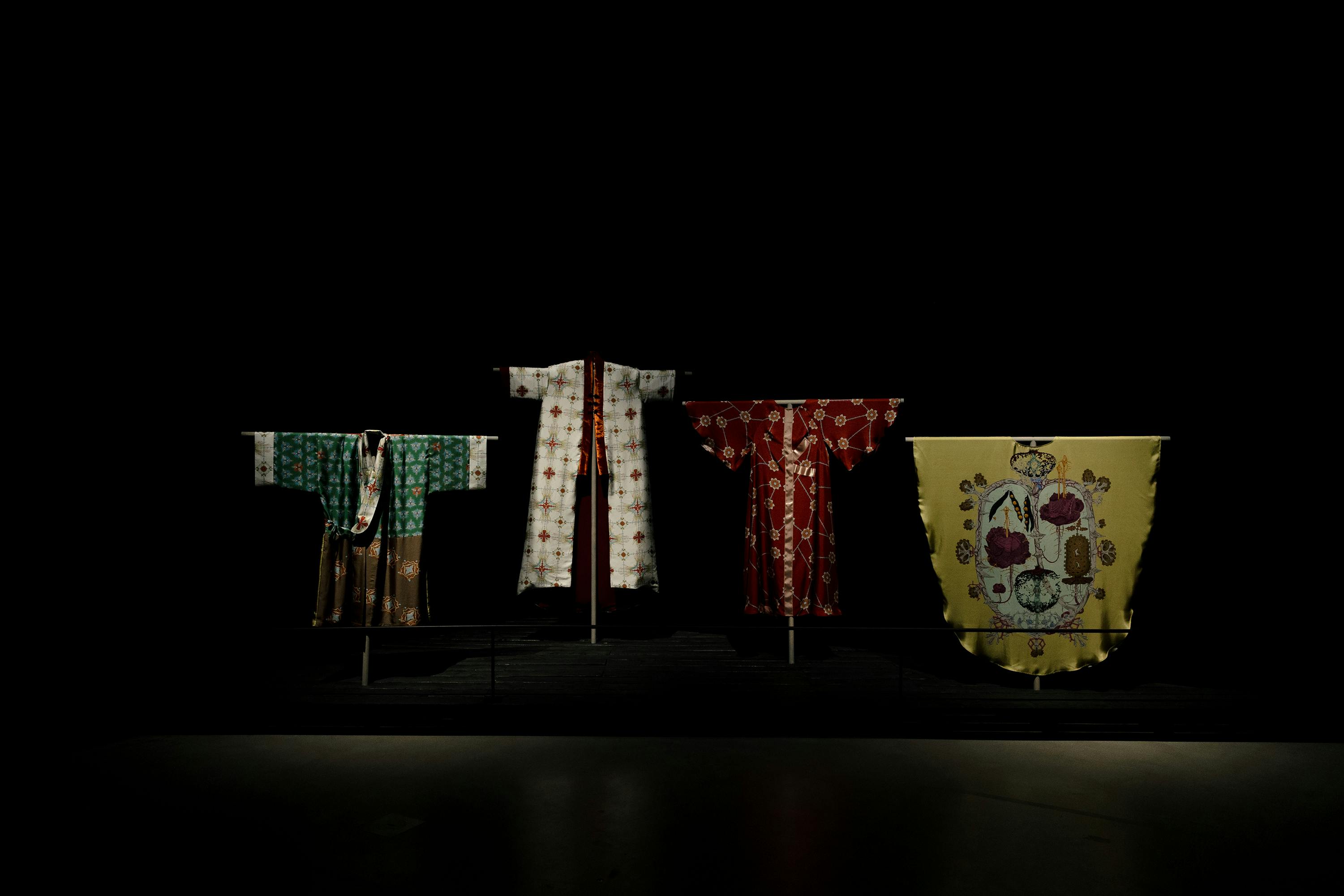
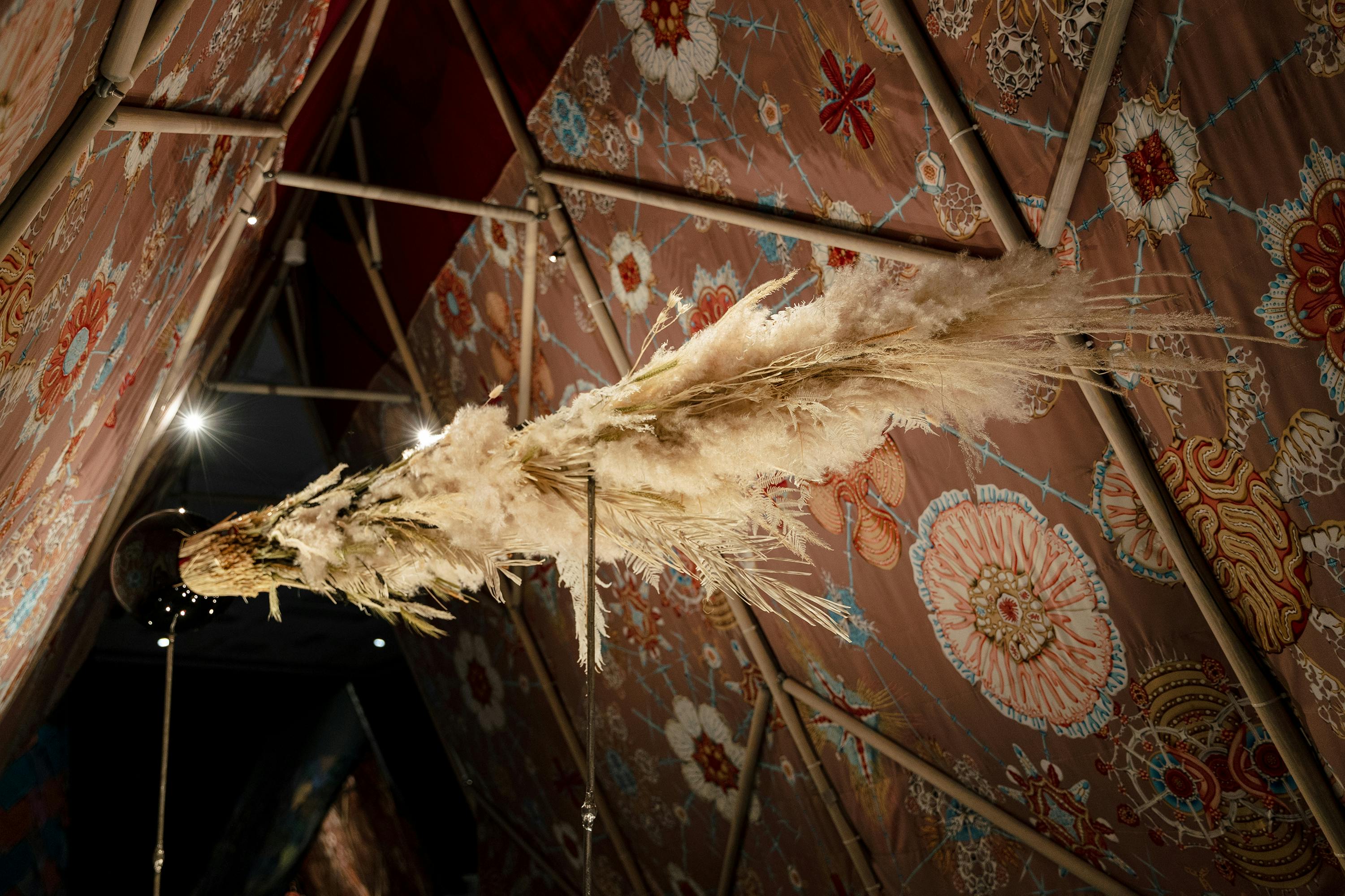

Voyagers from all over the world have been drawn to campfires by their own culture, nomadism or lifestyle choices, escapism and curiosity. Along with artists and scientists, their human understanding and life experiences stemming from their mobile nature have fascinated writers for centuries. When the British archaeologist T.E.Lawrence traveled to present-day Jordan in the early 20th century, he pitched his tent in the orange-red glowing desert of Wadi Rum. The nights were freezing cold, as always in the desert, but the constellations sparkled in the sky like crowns of jewels. There, you could admire the flight of meteorites reflected from the edges of space or contemplate your own place in the universe. His startling autobiography Seven Pillars of Wisdom (Oxford, 1922) was born out of these Arabian years, which includes, among other things, a love poem to his Syrian companion Selim Ahmed.
French aristocrat and aviator Antoine de Saint-Exupéry wrote perhaps the world's best-known fairy tale for grown-ups,The Little Prince (Reynal & Hitchcock, 1943), after crashing in the Sahara desert. In the work, Saint-Exupéry deals with universal questions that define human nature through various encounters: we meet a snake, we hear about a vain rose and poisonous baobab trees with dangerous roots. The fox would like the prince to tame him as his friend forever. However, this will not happen, as the journey must continue from one planet to another.
On our path towards the future, we, the rootless adventurers, draw knowledge, understanding and inspiration from the mystical currents of the world and become sensitized by Klaus Haapaniemi's works, along the paths of imaginary wanderers. And on this journey we may discover that there are many other dimensions in the universe than the visible and tangible one.
Mika Minetti
Head of Culture, Finnland-Institut
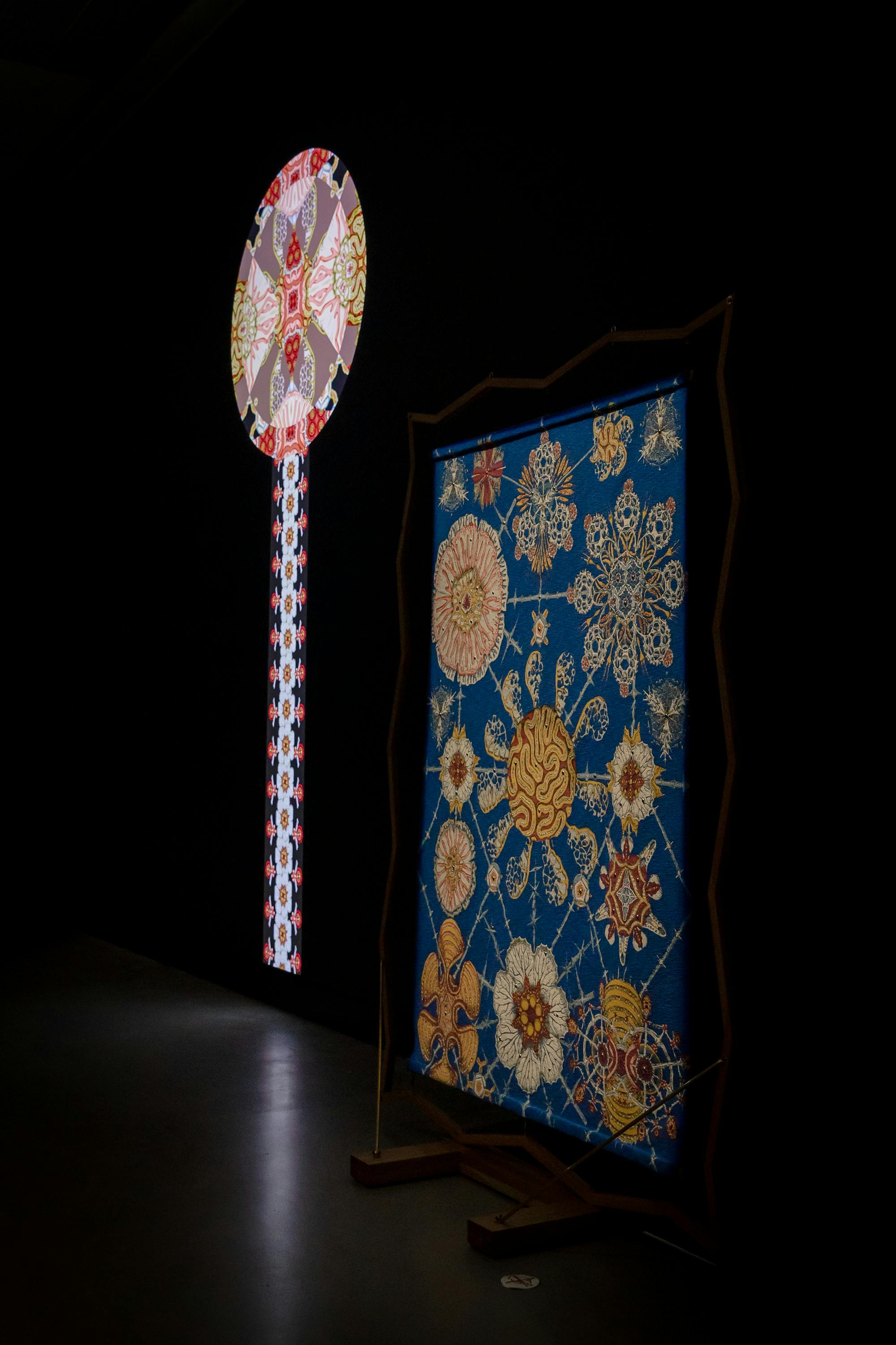
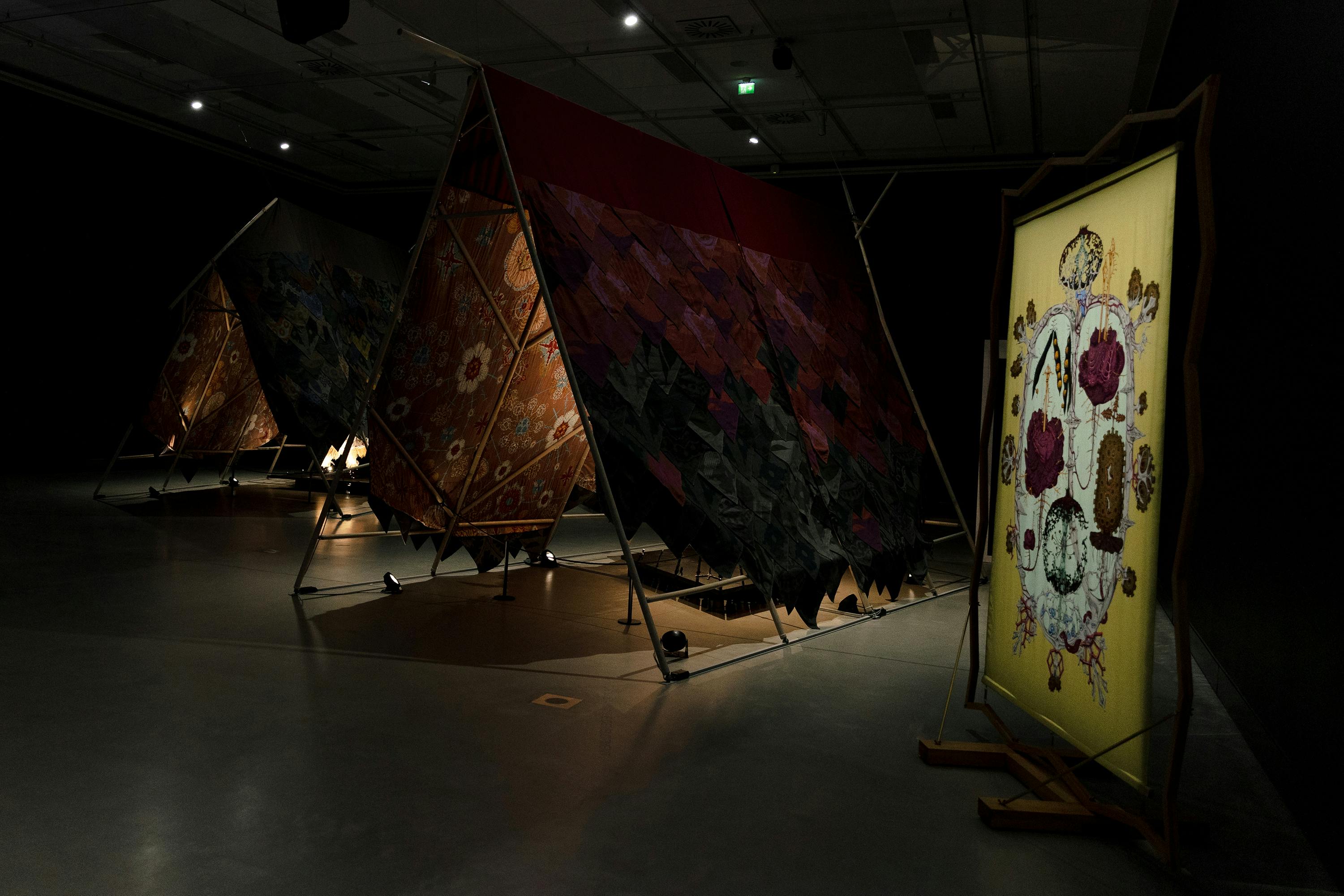
Voyagers exhibition has been made in collaboration with various masters of the craft:
Animation:
Vilja Achté
Carpenter:
Matti Salminen
Costumes:
Sini Villi
Mia Wallenius
Glassblowing:
Kirsi Anttila
Alma Jantunen
Johannes Rantasalo
Lasisirkus
Metal works:
Johannes Rantasalo
Photography:
Emmi Ekilä
Production:
Mia Wallenius
Straw works:
Taina Ekilä
Soundscape:
Antto Melasniemi
The exhibition is curated by Paula Korte and produced with Malva Museum team.
The exhibition is supported by Taike, Taiteen Edistämiskeskus.